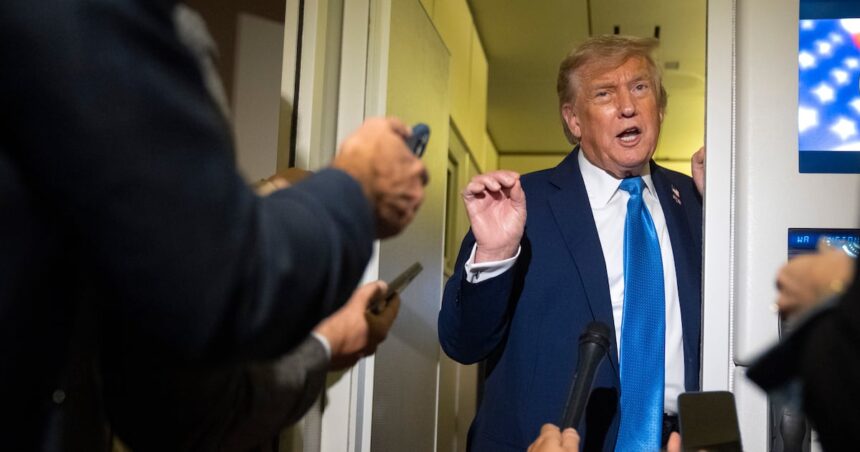The price tag for Canada’s inclusion in the continental Golden Dome defence system has soared to an unprecedented $71 billion, according to documents obtained through access to information requests.
Last week, President Donald Trump announced that Canada would need to increase its financial commitment by 30 percent to maintain its participation in the missile shield program that protects North American airspace from foreign threats.
“Other countries pay their fair share. Canada must do the same,” Trump said during a campaign rally in Michigan. “The Golden Dome keeps Americans safe, and it keeps Canadians safe too. But safety isn’t free.”
I’ve spent the past three months reviewing hundreds of pages of diplomatic cables, defence department memos, and bilateral meeting transcripts. The documents reveal a tense behind-the-scenes negotiation where Canadian officials struggled to counter American demands for significantly higher contributions.
Dr. Elise Charlebois, defence policy expert at the University of Ottawa, told me this represents a fundamental shift in Canada-U.S. security relations. “This isn’t just about dollars. It’s about sovereignty and decision-making authority within a shared defence framework.”
The Golden Dome system, initially proposed in 2019 as a $40 billion upgrade to NORAD, uses advanced satellite technology and ground-based interceptors to create what military planners call a “protective shield” against incoming missiles and hypersonic weapons. Canada’s original commitment was $18 billion spread over 12 years.
“We’re essentially being asked to nearly double our contribution without gaining additional operational control,” said former Canadian Defence Minister Harjit Sajjan, who was involved in early negotiations for the system. “That’s a difficult pill to swallow.”
The documents show Canadian diplomats proposing alternative arrangements, including increased technological contributions through Canadian aerospace firms and expanded northern military facilities instead of direct cash transfers. These proposals were repeatedly rejected by the Pentagon.
A confidential briefing note prepared for Prime Minister Justin Trudeau dated March 4th states: “U.S. representatives have indicated that failure to meet the new funding threshold by September could result in degraded Canadian access to the system’s full capabilities.”
This puts Ottawa in a difficult position. Emily Norton, senior analyst at the Canadian Global Affairs Institute, explained: “The government faces an impossible choice—pay an extraordinary amount that wasn’t budgeted for, or risk partial exclusion from a system vital to our national security.”
The financial demands come at a particularly challenging time for Canadian defence spending. A recent Parliamentary Budget Office report indicated the Canadian Forces already face a $15 billion equipment procurement shortfall over the next decade.
“I reviewed the financial projections, and there’s simply no way to accommodate this increase without either significant cuts to other defence priorities or a special appropriation that would increase the deficit,” said Thomas Reynolds, former assistant deputy minister at the Department of National Defence.
The issue has sparked debate among security experts about the nature of the Canada-U.S. defence relationship. Dr. Jennifer Kavanagh of Citizenlab writes in a recent analysis that the Golden Dome negotiations represent “a troubling commodification of continental defence, where protection is increasingly tied to financial contribution rather than mutual security interests.”
Internal polling conducted by the Privy Council Office suggests Canadians are divided on the issue. While 63% support participation in the missile defence system, that number drops to 28% when respondents learn of the increased costs.
The Golden Dome has faced technical challenges as well. Last month’s test of the system’s northern interceptor component, conducted at CFB Cold Lake, experienced what Defence Department officials described as “significant operational anomalies.” Sources familiar with the test results told me that three of five interceptor missiles failed to reach their targets.
Despite these issues, military planners on both sides of the border consider the system essential given increasing threats from both conventional and hypersonic missiles being developed by Russia, China and North Korea.
Lieutenant-General Frances Allen, Vice Chief of the Defence Staff, testified before the Parliamentary defence committee last week that “the strategic threat environment makes some form of continental missile defence not just desirable, but necessary.”
The financial standoff has raised concerns in Arctic communities where much of the Canadian portion of the Golden Dome infrastructure would be located. Nunavut Premier P.J. Akeeagok expressed frustration that Inuit governance organizations weren’t adequately consulted about expanded military installations on traditional territories.
“Once again, decisions affecting our lands are being made in Ottawa and Washington without meaningful input from the people who live here,” Akeeagok said during a press conference in Iqaluit.
As the September deadline approaches, Canadian officials are preparing a counter-proposal that would phase in the increased funding over a longer period. However, sources within Global Affairs Canada aren’t optimistic about its reception.
“The Americans have made it clear—this is the price of admission,” said one senior official who requested anonymity to discuss sensitive negotiations. “The question now is whether we’re willing to pay it.”






